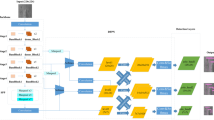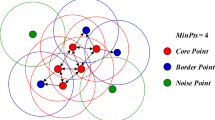Abstract
Screening of the best matching pair of broken pieces of 3D cultural relics is an important step in realizing their automatic reassembly. Herein, a reassembly framework based on an extended Gaussian sphere (EGS) and a similarity function is proposed. First, the inner surface was identified based on the proportion of the point cloud and the smoothness of the broken pieces, thereby avoiding over-segmentation. The EGS model was then used to represent the geometric and color information of the inner surface boundary. The similarity function, which was defined to describe the global characteristics of the EGS model, can help the program to automatically screen the two most similar broken pieces to be matched. In this way, the rough alignment step was completed. Finally, a fine alignment step was conducted using the iterative closest point method. This reassembly framework is effective for broken bowl-shaped pieces. The average screening accuracy of our final method is 93.87% and the calculation time is 9.7 s. Compared with a traditional Gaussian sphere model based on a normal vector and curvature, the proposed method can improve the screening accuracy and average calculation speed by 6.60% and 16.08%, respectively. Experimental results with real datasets demonstrated the validity and effectiveness of the proposed method.














Similar content being viewed by others
References
Altantsetseg E, Matsuyama K, Konno K (2014) Pairwise matching of 3D fragments using fast Fourier transform. Vis Comput 30:929–938. https://doi.org/10.1007/s00371-014-0959-9
Cohen F, Zhang Z, Liu Z (2016) Mending broken vessels a fusion between color markings and anchor points on surface breaks. Multimed Tools Appl 75:3709–3732. https://doi.org/10.1007/s11042-014-2190-0
Gao Y, Du Z, Xu W, Li M, Dong W (2019) HEALPix-IA: a global registration algorithm for initial alignment. Sensors-Basel 19:427–442. https://doi.org/10.3390/s19020427
Ge Y, Tang H, Xia D, Wang L, Zhao B, Teaway JW, Chen H, Zhou T (2018) Automated measurements of discontinuity geometric properties from a 3D-point cloud based on a modified region growing algorithm. Eng Geol 242:44–54. https://doi.org/10.1016/j.enggeo.2018.05.007
Hu L, Nooshabadi S (2017) Massive parallelization of approximate nearest neighbor search on KD-tree for high-dimensional image descriptor matching. J Vis Commun Image R 44:106–115. https://doi.org/10.1016/j.jvcir.2017.01.013
Li J, He B, Liu S, Liu Q (2016) Nondestructive analysis of Jingdezhen and Longquan celadon wares excavated from Nanhai no.1 shipwreck. Spectrosc Spect Anal 36:1500–1507. https://doi.org/10.3788/LOP53.051101
Oxholm G, Nishino K (2013) A flexible approach to reassembling thin artifacts of unknown geometry. J Cult Herit 14:51–61. https://doi.org/10.1016/j.culher.2012.02.017
Papaodysseus C, Arabadjis D, Exarhos M, Rousopoulos P, Zannos S, Panagopoulos M, Papazoglou-Manioudaki L (2012) Efficient solution to the 3D problem of automatic wall paintings reassembly. Comput Math Appl 64:2712–2734. https://doi.org/10.1016/j.camwa.2012.08.003
Shin H, Doumas C, Funkhouser T, Rusinkiewicz S, Steiglitz K, et al (2010) Analyzing fracture patterns in Theran wall paintings. In: 11th international symposium on virtual reality, Archaeology and Cultural Heritage, Paris , France ,pp71–78
Sun J, Huang Z,Zhu X, Zeng L, Liu Y, Ding J(2017) Deformation corrected workflow for maxillofacial prosthesis modelling. Adv Mech Eng:1–10. https://doi.org/10.1177/1687814017692286
Tsamoura E, Pitas I (2010) Automatic color based reassembly of fragmented images and paintings. Ieee T Image Process 19:680–690. https://doi.org/10.1109/TIP.2009.2035840
Wu M, Wang J (2018) Reassembling fractured sand particles using fracture-region matching algorithm. Powder Technol 338:55–66. https://doi.org/10.1016/j.powtec.2018.06.045
Zhang K, Li X (2014) A graph-based optimization algorithm for fragmented image reassembly. Graph Models 76:484–495. https://doi.org/10.1016/j.gmod.2014.03.001
Zhang M, Chen S, Shu Z, Xin SQ, Zhao J et al (2017) Fast algorithm for 2D fragment assembly based on partial EMD. Vis Comput 33:1601–1612. https://doi.org/10.1007/s00371-016-1303-3
Zhang Y, Li K, Chen X, Zhang S, Geng G (2018) A multi feature fusion method for reassembly of 3D cultural heritage artifacts. J Cult Herit 33:191–200. https://doi.org/10.1016/j.culher.2018.03.001
Zhao F, Zhou M, Geng G, Zhu L (2018) Rigid blocks matching method based on contour curves and feature regions. IET Comput Vis 12:76–85. https://doi.org/10.1049/iet-cvi.2016.0392
Acknowledgements
The authors would like to thank all the reviewers for their valuable comments. This study was supported by the National Natural Science Foundation of China (Grant No. 51475409), Research Project of State Key Laboratory of Mechanical System and Vibration (Grant No. MSV201810), and Jiangsu Province Basic Research Program Natural Science Foundation (Grant No. BK20171287).
Author information
Authors and Affiliations
Corresponding author
Ethics declarations
Declaration of interests
The authors declare that they have no known competing financial interests or personal relationships that could have appeared to influence the work reported in this paper.
The authors declare the following financial interests/personal relationships which may be considered as potential competing interests.
Additional information
Publisher’s note
Springer Nature remains neutral with regard to jurisdictional claims in published maps and institutional affiliations.
Rights and permissions
About this article
Cite this article
Sun, J., Ding, Y., Zhu, X. et al. Extended Gaussian sphere and similarity fusion method for reassembly of 3D cultural relics. Multimed Tools Appl 79, 30187–30203 (2020). https://doi.org/10.1007/s11042-020-09535-9
Received:
Revised:
Accepted:
Published:
Issue Date:
DOI: https://doi.org/10.1007/s11042-020-09535-9




